


Introduction by André Schulz
Hamburg historian Frauke Steinhäuser is a volunteer for the Hamburger-Stolpersteinprojekt, a project Wikipedia describes as follows:
"A Stolperstein ... is a ten-centimetre (3.9 in) concrete cube bearing a brass plate inscribed with the name and life dates of victims of Nazi extermination or persecution. Literally, it means 'stumbling stone' and metaphorically 'stumbling block'.
The Stolpersteine project, initiated by the German artist Gunter Demnig in 1992, aims to commemorate individuals at exactly the last place of residency – or, sometimes, work – which was freely chosen by the person before they fell victim to Nazi terror, forced euthanasia, eugenics, deportation to a concentration or extermination camp, or escaped persecution by emigration or suicide. As of June 2023, 100,000 Stolpersteine have been laid, making the Stolpersteine project the world's largest decentralized memorial."
While researching a book on persecuted Jewish athletes from Hamburg, Frauke Steinhäuser came across a number of chess players, including the twin sisters Käthe and Wally Henschel. The latter gained some notoriety at the time after she managed to defeat Vera Menchik at the 1930 Women's World Chess Championship in Hamburg.
Although Sonja Graf also defeated Vera Menchik in two games in a match for the 1937 Women's World Championship - Menchik still won the match by a large margin - Wally Henschel remained the only women player to beat Menchik in a women's world championship tournament.
This success did not save Wally Henschel and her twin sister Käthe, who was also an excellent chess player, from persecution by the Nazis. In 1938, after the pogrom night on 9 November 1938, the two sisters made an adventurous escape to the USA, where they survived the war and continued to play chess.
In the course of her research, Frauke Steinhäuser made contact with a great-niece of the two sisters who is still in touch with descendants in the USA. As a result, some important photos and a nice anecdote came to light.

Frauke Steinhäuser, Petra Ahrens
When the Henschel sisters lived in New York they also visited the New York chess clubs. Legend has it, that in the early 1950s a talented eight or nine year old boy was introduced to Wally Henschel, who was 57 at the time. She won against the boy, who then became so angry that he never wanted to play chess against a woman again. It was the young Bobby Fischer.
09.09.1893 Hamburg – 16.05.1991 Miami/USA
09.09.1893 Hamburg – 13.12.1988 Miami/USA
Twin sisters Käthe and Wally Henschel were both exceptionally talented chess players. When they were born their parents lived at 305 Wandsbeker Chaussee in Hamburg-Eilbek. Their father, Israel Abraham Henschel, was an estate agent and their mother, Fanny, née Lewek, was a housewife. The twins had an older sister, Gertrud. Their father had been a member of the Hamburg Chess Club (HSK) since 1881 and was considered one of its best players - talent obviously ran in the family. Wally and Käthe both started playing chess at the age of twelve, Wally joining the club in 1922, Käthe in the following year.
Although Käthe and Wally Henschel remained close throughout their lives and always lived together, they took very different career paths. After leaving school, Käthe trained as an office clerk and worked as a secretary for the shipbroking firm Axel Dahlström & Co. Wally, on the other hand, began six years of singing and piano studies at the Bernuth Conservatory in Hamburg at the age of sixteen. In 1927 she passed the examination to become a state-approved singing teacher and in 1929 the examination to become an opera singer.
In Hamburg she mainly gave concerts as a singer, for example at recitals in the Musikhalle. During the First World War, she took a German nationalist stance when she performed for German soldiers - including with the Hamburg City Theatre in Belgium.
Wally Henschel was considered the slightly better chess player of the twins. In 1927 she shared fourth place in the HSK internal championships in class II and was first in class III, while her sister Käthe shared fourth place in this class with a club colleague. However, membership of the HSK apparently was not enough for either of them, for in the same year they were among the ten founders of the Ladies' Chess Club of Greater Hamburg. The weekly chess afternoons were held in the meeting room of the Stadtbund Hamburgischer Frauenvereine. The sisters' mother, Fanny Henschel, was also active in the club. Just five years after its foundation it had 60 members and was, according to the Hamburg correspondent, "the largest women's chess club ever".
At the Women's World Chess Championship 1930 in Hamburg, which was played in parallel to the Chess Olympiad 1930, Wally Henschel caused a sensation.
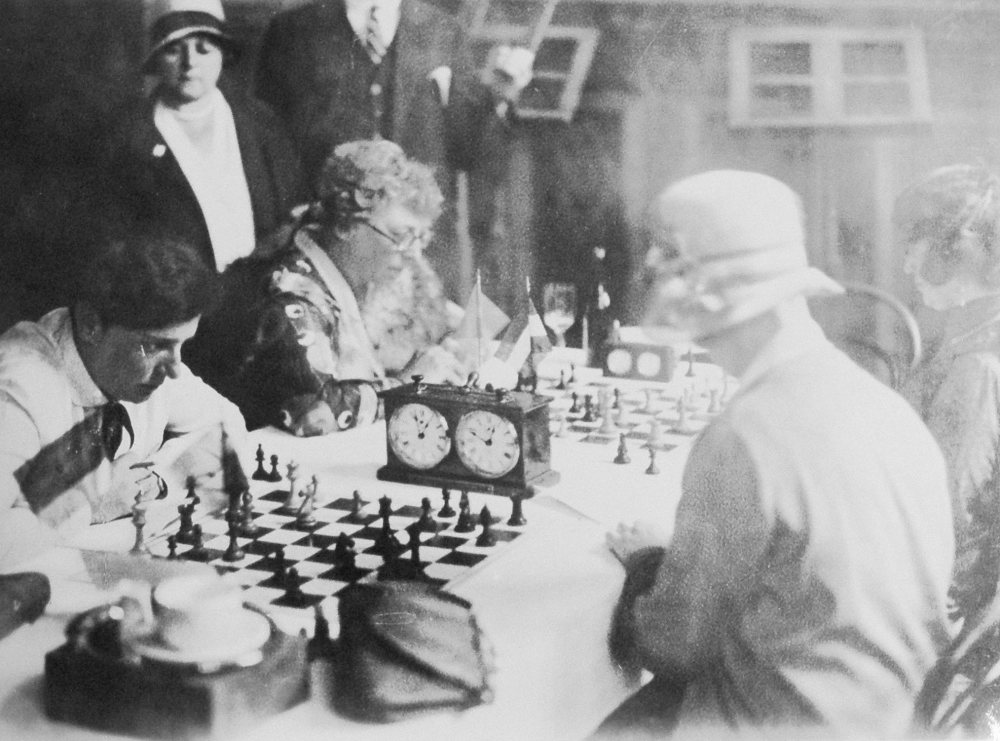
Wally Henschel during a tournament, ca 1930
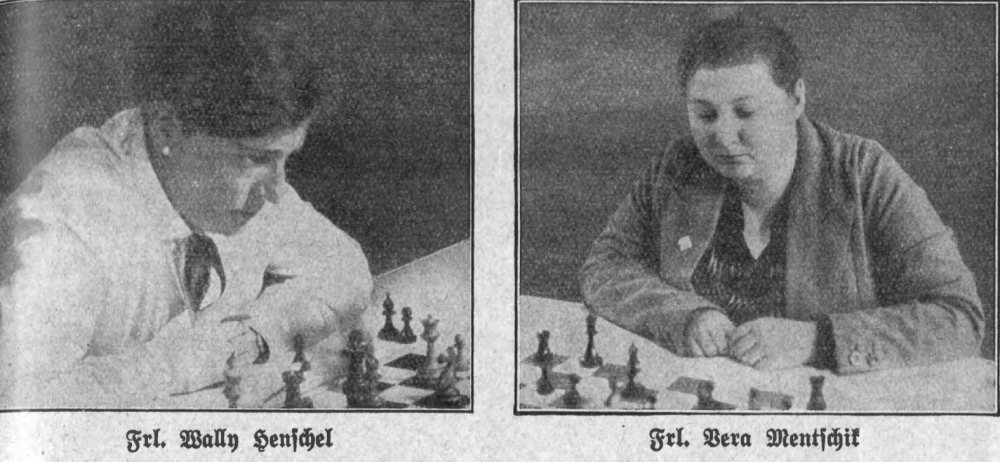
She defeated reigning world champion Vera Menchik, becoming the only player ever to win a game against her in a women's world championship tournament. She finished third overall. The Hamburger Anzeiger, which had previously raised the - rhetorical - question of whether women should be allowed to play chess at all, described Wally Henschel's strategy as follows "The Hamburg player develops her plan from the outset in a strictly logical train of thought, ruthlessly exploits the somewhat risky game plan of Miss [Vera Menchik, Frauke Steinhäuser] and crowns the whole thing with a vehement final attack". Wally Henschel also appeared at the tournament as a singer with a "beautiful [...] performance of songs by R[ichard] Strauss, E[dward] Grieg and the aria from Tosca".
In 1931, Wally Henschel became chess champion of Greater Hamburg, beating her sister Käthe. Like other female chess players, both competed not only in women-only tournaments, but also against male competitors in mixed tournaments. Käthe Henschel, for example, was the only woman to win Group B at the national festival of the Lower Elbe Chess Federation in Lübeck. And at simul given by Efim Bogoljubow at the HSK in 1932, Käthe and Wally Henschel did the same as various male club members and managed to wrest a draw from Bogoljubow.
The fact that both Wally and Käthe Henschel were so talented at chess attracted the attention of the physician and twin researcher Otmar von Verschuer, who later became one of the leading Nazi eugenicists. He chose both as subjects for his research and published his pseudo-scientific findings in 1931 in an issue of the series "Eugenik, Erblehre, Erbpflege" ("Eugenics, Genetics, Hereditary Care") under the title "Ein erbgleiches Zwillingspaar mit hervorragender Begabung fürs Schachspiel" ("A genetically identical pair of twins with an outstanding talent for chess").
But when the Nazis came to power, Käthe and Wally Henschel had to leave the HSK. In December 1933 they joined the newly formed chess section of the Schild sports group and immediately took part in the club championship competitions that began that month. In July 1934 they took part in the sports group's summer chess tournament.
In 1935 they moved from Schild to the newly formed chess section of Blau-Weiß. In 1935/36 they also took part in the club championship tournament there. In the second round in November 1935 they even played against each other, which prompted the Israelitisches Familienblatt to publish the following short report:
"The Henschel ladies played a game by hook or by crook. Wally, as leader of the white pieces, played a great attacking game, even renouncing castling. Käthe, however, was able to fend off all dangers with great coolness, castling and finally winning in the endgame; a fortunate victory over her sister, who perhaps played a little too boldly".
However, neither of them were able to make an impact on the rest of the club championship. Käthe Henschel played "somewhat unlucky" several times, according to the Israelitisches Familienblatt, and Wally Henschel was also unable to leave a mark.
However, their concentration on chess and music and their social integration into like-minded circles could not hide the fact that the twin sisters' lives were reaching a crisis as a result of increasing anti-Semitic marginalisation, hostility and persecution. At the same time, they were still fortunate enough to have a secure livelihood. Käthe Henschel's employer, Dahlström, a non-Jewish company, had not dismissed her after 1933, and had even increased her salary. Her lawyer confirmed this in her later compensation case. Wally Henschel, on the other hand, was employed by the New Israelite Temple in Oberstrasse. She regularly sang at services, weddings, funerals and Jewish high holidays. She also conducted the children's choir. She also performed at events organised by the Jewish Cultural Association and gave singing and piano lessons.
After "Kristallnacht", the November pogrom in 1938, the sisters decided to flee to the USA. A cousin living in New York vouched for them. Wally Henschel's Bechstein grand piano was also part of their belongings. They left Germany on 25 March 1939. The journey to the USA took several months, partly due to visa problems, and took them via the Netherlands, England, the West Indies, Central America and Haiti before they finally reached New York.
It was difficult for them to find work there for a long time, and they had to rely on their cousin to support them - as unmarried women, they had always been self-supporting. Käthe Henschel, who changed her first name to Kate, finally found a job as a secretary in an import-export company after two years. For Wally, however, forced emigration meant the end of her professional career. She could no longer earn a living as a singing and piano teacher, or as a singer or pianist. So she had to find another way to make a living. In 1944 she opened a small boarding house to make ends meet.
Only when both sisters had found their feet in the USA - their circle of friends in New York consisted of many German emigrants - did they turn to chess again, playing in a New York Chess Club and taking part in public tournaments.
From 1944 until the 1950s they took part in the U.S. Women's Chess Championships; in 1944 Käthe Henschel came third and Wally fourth.
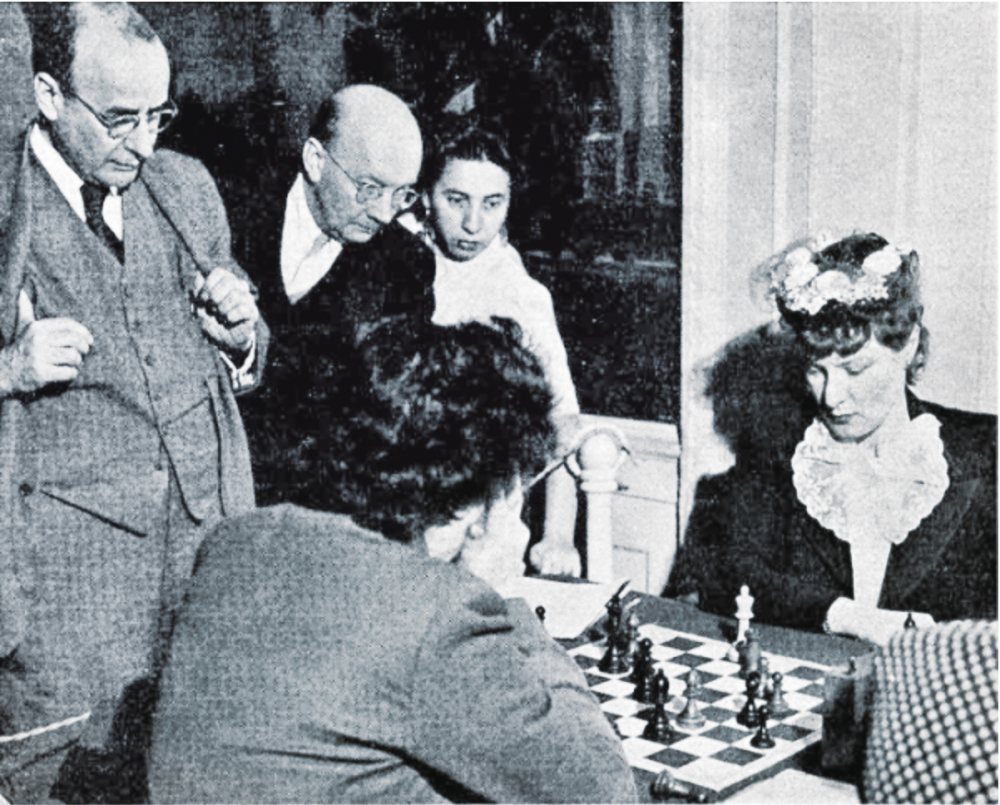
U.S. Women's Championship 1944, Käthe Henschel (with Black)
According to an unfortunately unproven legend, she is even said to have beaten Bobby Fischer in 1951 or 1952 when he was 8 or 9 years old. He was allegedly so angry about his loss that he never played chess against a woman again.
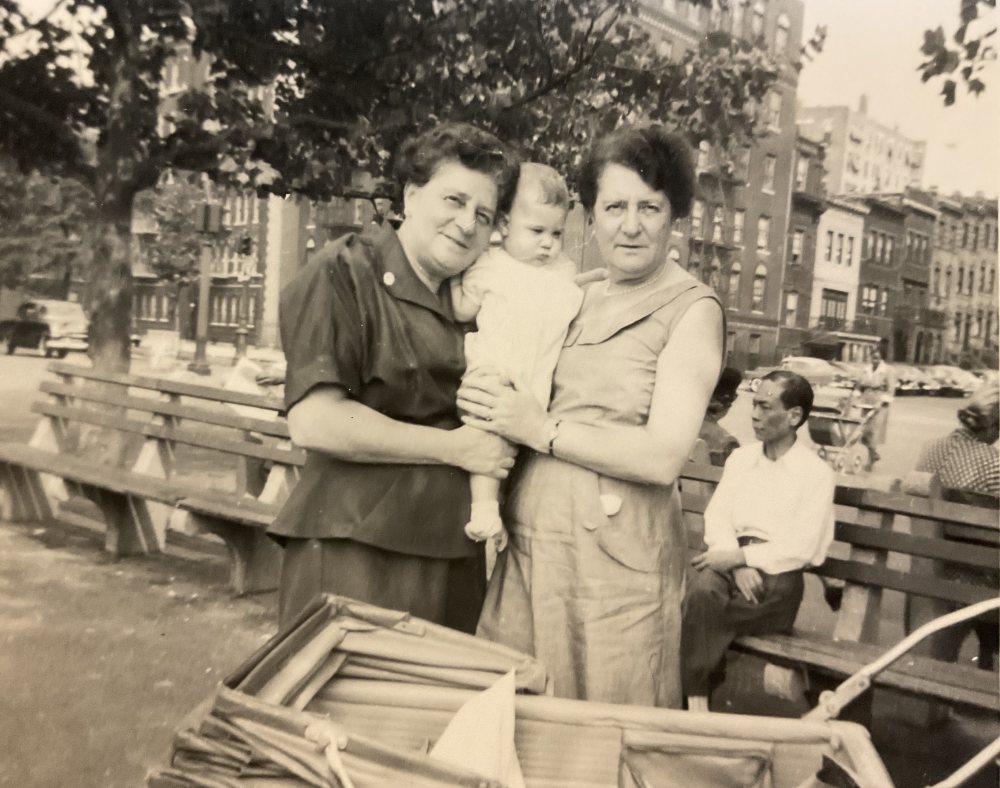
Käthe and Wally Henschel with their grandniece
As she got older, Wally's eyesight deteriorated. By the mid-1950s she was nearly blind in one eye and severely visually impaired in the other, which severely limited her ability to work. She also found it increasingly difficult to play chess. In 1954, she submitted her first application for compensation for Nazi persecution to the Hamburg Restitution Office - and in 1970, both indignant and self-confident, she demanded an additional payment, the same amount that friends had already received: "Does this mean that Hamburg pays much less to the persecuted than other cities in Germany, or can we expect further additional payments and when?" she wrote to the authorities.
In 1986, Käthe and Wally Henschel moved to Miami, Florida, to be near a nephew.

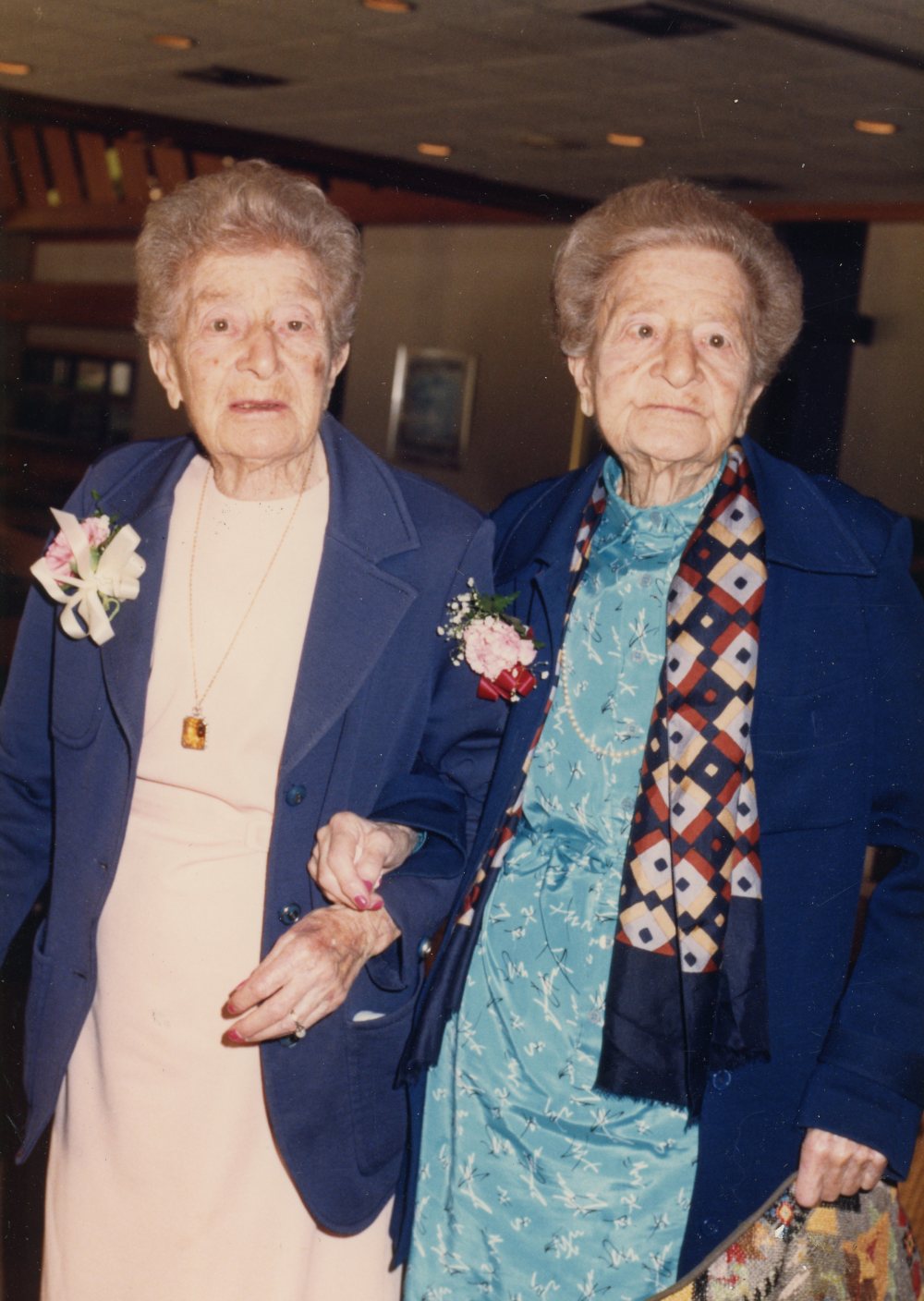
Wally died there at the age of 95 and Käthe at 97.
Her older sister Gertrud was married to Werner Lüdeking, who was not Jewish, and was initially relatively safe from deportation. In February 1945, however, she was ordered to 'work' in the East, which in this case meant deportation to the Theresienstadt ghetto. She escaped transport only because she was ill. Her husband's company had been "Aryanised" years earlier, and he himself had been forced to do forced labour clearing the dangerous rubble after the bombing of Hamburg. A granddaughter of the Lüdekings now lives in Lower Saxony, who is also the great-niece of Käthe and Wally Henschel and who provided most of the photographs illustrating this text.
| Advertising |